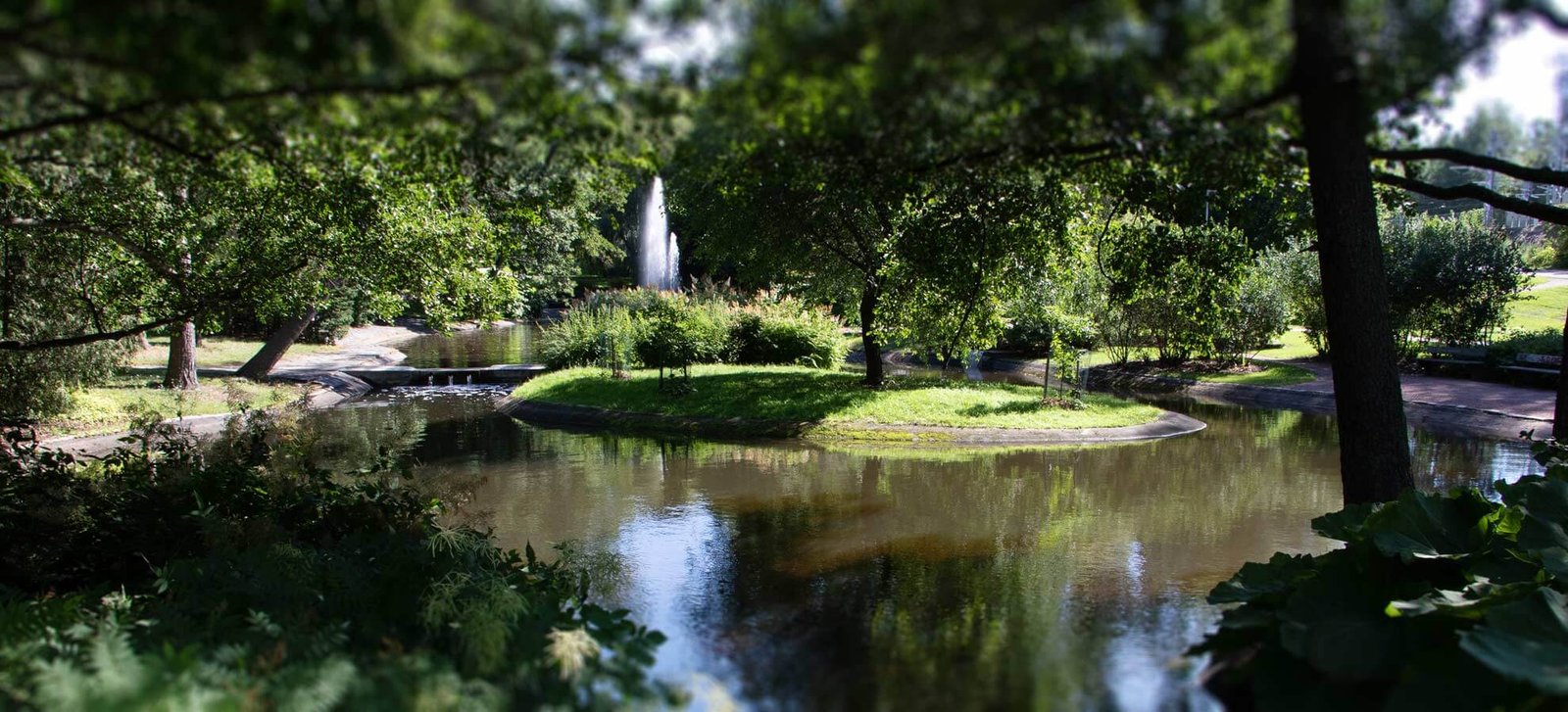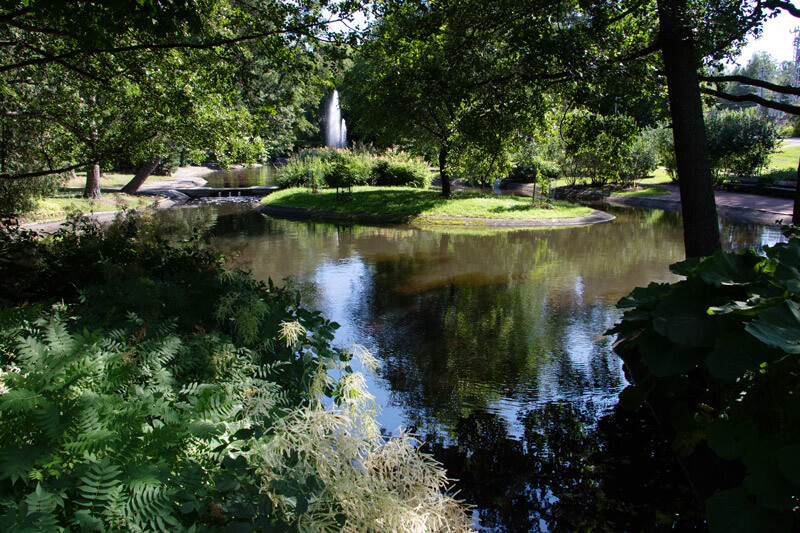In the early 1800s the area that is now Alppipuisto Park was still a rocky forest with only small allotments for farming. Then in the 1850s Henrik Borgström (1799–1883), the father of Helsinki’s parks, became interested in the area. His idea was to establish a spa and restaurant at the tip of the Töölönlahti bay, as he had in Kaivopuisto Park. A zoo was also planned, giving the area its present name “Eläintarha”.
The project was so big that a commercial enterprise, the Töölö Park Company (Töölön puistoyhtiö), was set up in 1851 to implement it. At the time this green area was the biggest park in the city, and it was very popular for long walks.
The decisive factor in the park’s history was the construction of the Helsinki–Hämeenlinna railway line between 1858 and 1862, dividing the area in two and destroying the original spring. As a result, interest in buying shares in the company evaporated and the spa and zoo project folded. Borgström still built a restaurant on the eastern side of the railway line, which he named Alppila/Alphyddan. As a result, the park surrounding the restaurant became known as Alppipuisto. Borgström used his own funds to plants flowers and shrubs in the park, as well as to construct embankments.
The restaurant was destroyed by fire in 1875 but subsequently rebuilt, only to be destroyed by fire again on 8 October 1951. Today only the foundation remains to the north of the road Tivolitie, and it is used as a viewing platform.
From 1875 to 1907 Alppipuisto Park and its pavilion were managed by the Finnish Gardening Association.
In 1908 the park transferred to the City of Helsinki. City Gardener Svante Olsson drew up plans according to which the park, including its ponds and fountains, was renovated in 1913 and 1914.
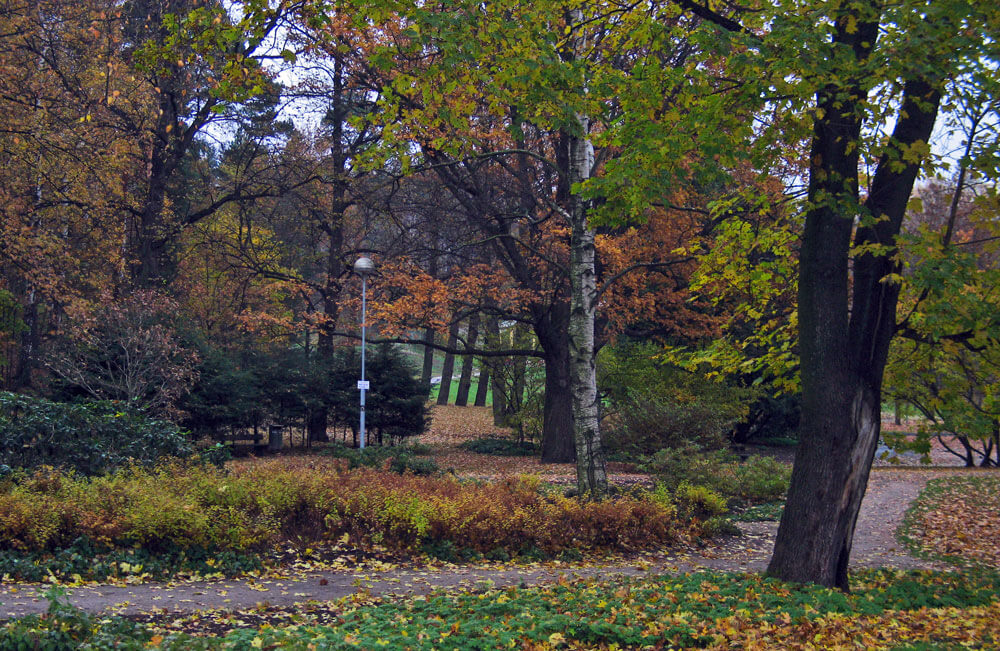
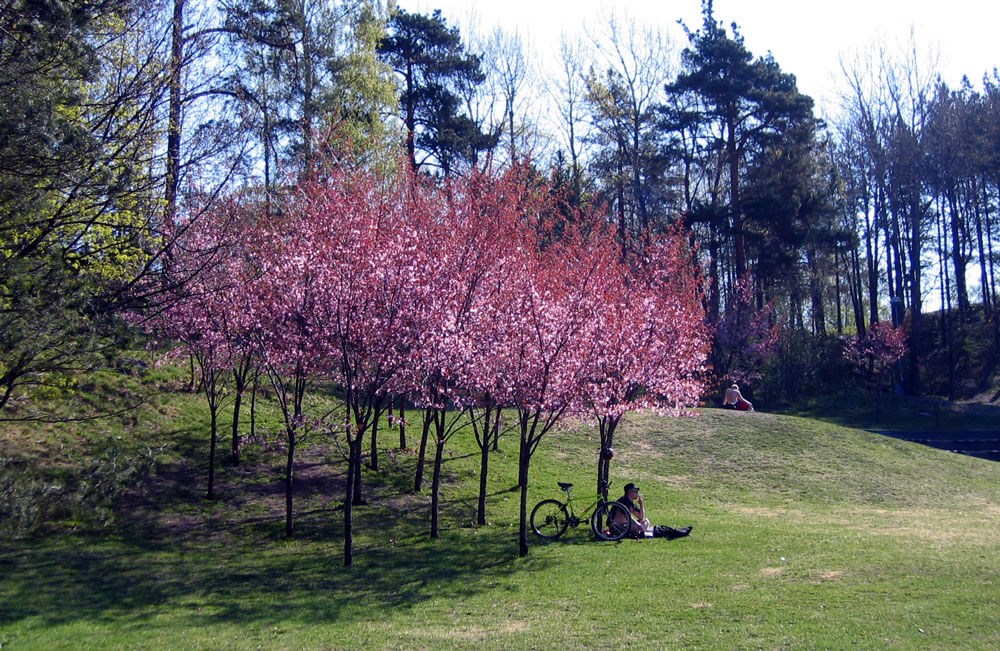
Alppipuisto Park is a typical scenic park of the early 20th century, complete with duck ponds and winding paths. The 30-metre-high rocks make the park especially impressive – one of the first ski jumps in Helsinki was once located here. The light valley between the rocks attracts visitors to enjoy healthy sports and recreation, or they can relax around the pond and watch the ducks.
The tall Vesilinnanmäki hill in the centre of the park was once the location of the Finnish Worker’s Summer Theatre, which was founded in 1945, as well as the popular Alppilava dance pavilion in the 1940s and ‘50s. In 1950 the Children’s Day Foundation established Linnanmäki Amusement Park, which reduced the park’s size by 7.5 hectares. Ever since, Linnanmäki has been the most popular attraction in the area, and every once in a while there is talk of rebuilding the dance pavilion.
Renovation, maintenance and development
Alppipuisto Park underwent a major renovation in 1985. The asphalt bicycle path that once crossed through the middle of the park was moved closer to the railway line, creating a more peaceful and unified green area in the centre. At the same time, the heavy fencing around the ponds was removed.
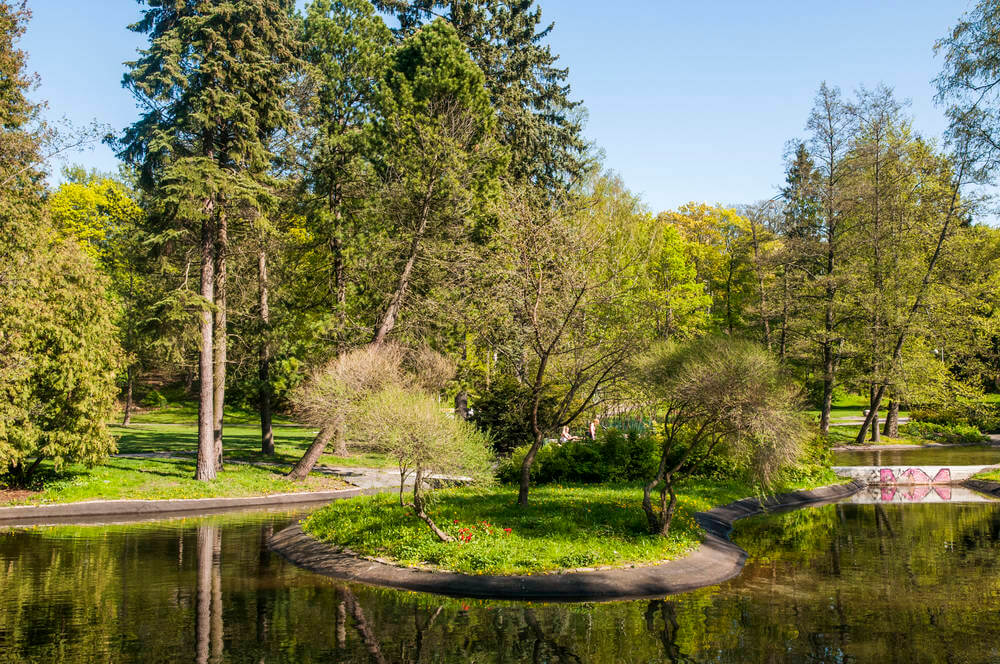
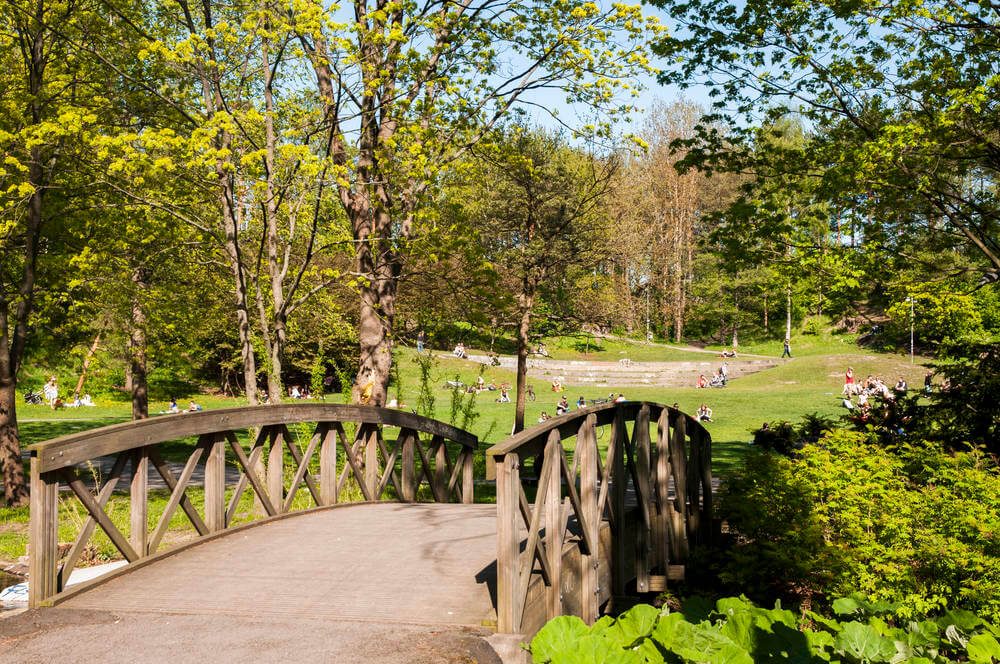
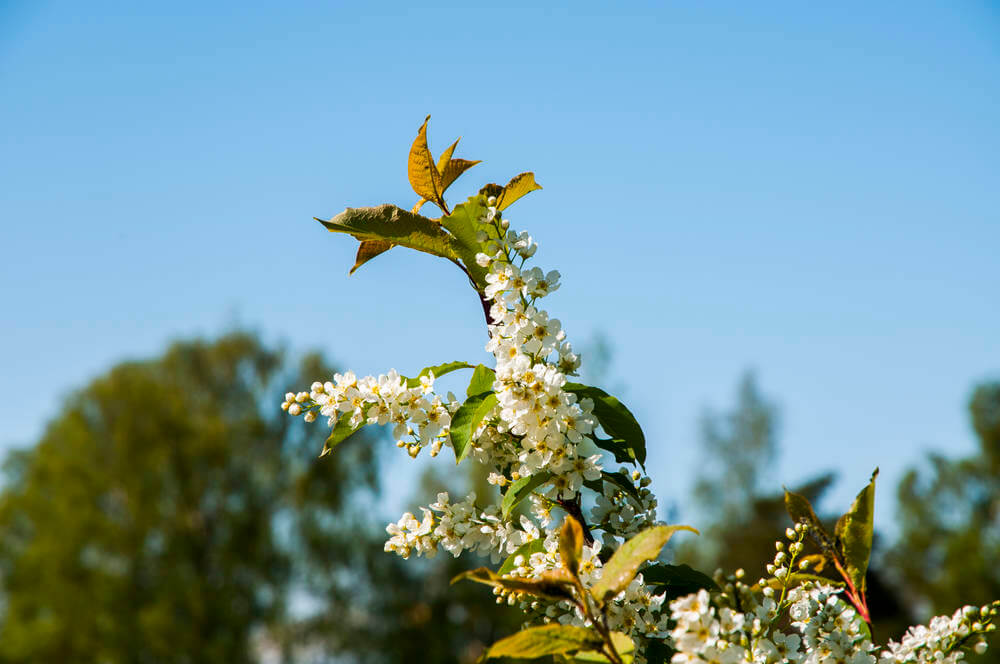
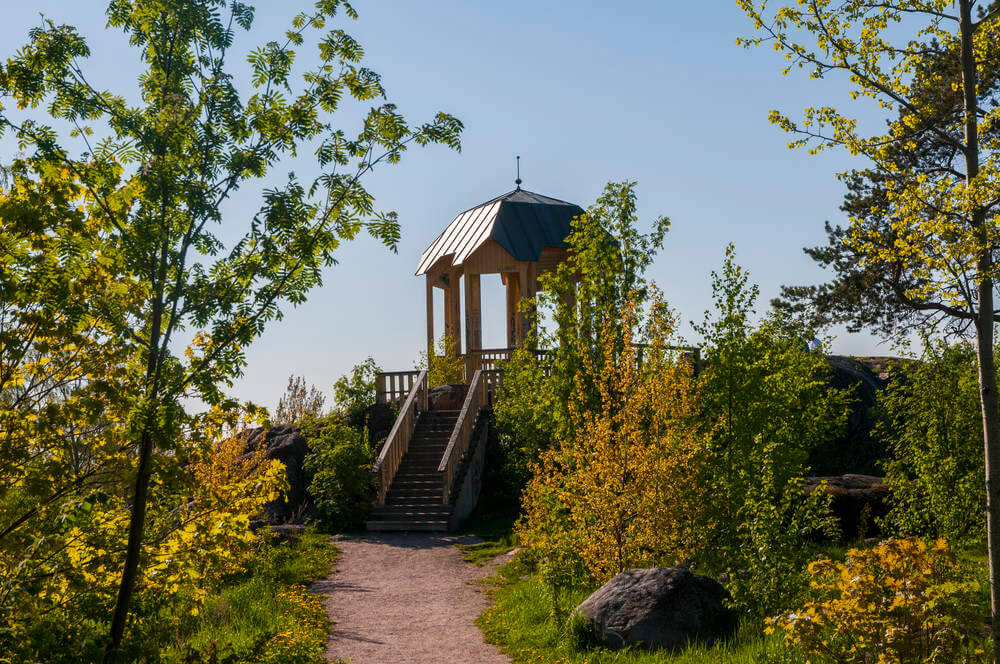
A large lawn stretches from the ponds to the slope, where a natural amphitheatre was built. Next to the amphitheatre is a small open stage, which is also new, as is the pavilion up on the hill. The models for the pavilions were taken from historical photos.
Also up on the slope are 80 Sargent’s cherry trees (Prunus sargentii) that were donated by local Japanese residents; the park is truly spectacular when they are in blossom. A weeping birch and 13 different types of poplars grow by the side of the pond. The park also features large flowerbeds with perennials.
Some rare plants have been introduced to the park in the 2010s with a view towards climate change. These include a Kentucky yellowwood (Cladrastis kentukea), a Japanese wingnut (Pterocarya rhoifolia), a Manchurian striped maple (Acer tegmentosum), a ‘Wada’s Memory’ magnolia, and a Royal azalea (Rhododendron schlippenbachii), as well as beech trees (Fagus), hornbeams (Carpinus betulus L.), wild cherries (Prunus avium), Amur honeysuckle (Lonicera maackii) and mountain witch alder (Fothergilla major).
The park was renovated most recently in 2007 according to a new maintenance and development plan. Today, Alppipuisto Park is one of the most attractive parks in Helsinki, both in terms of scenery and the variety of plants. It is particularly popular for small concerts and events, as well as for picnics.

